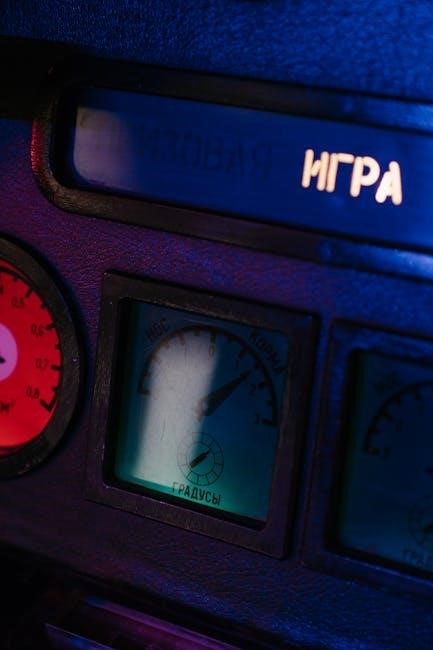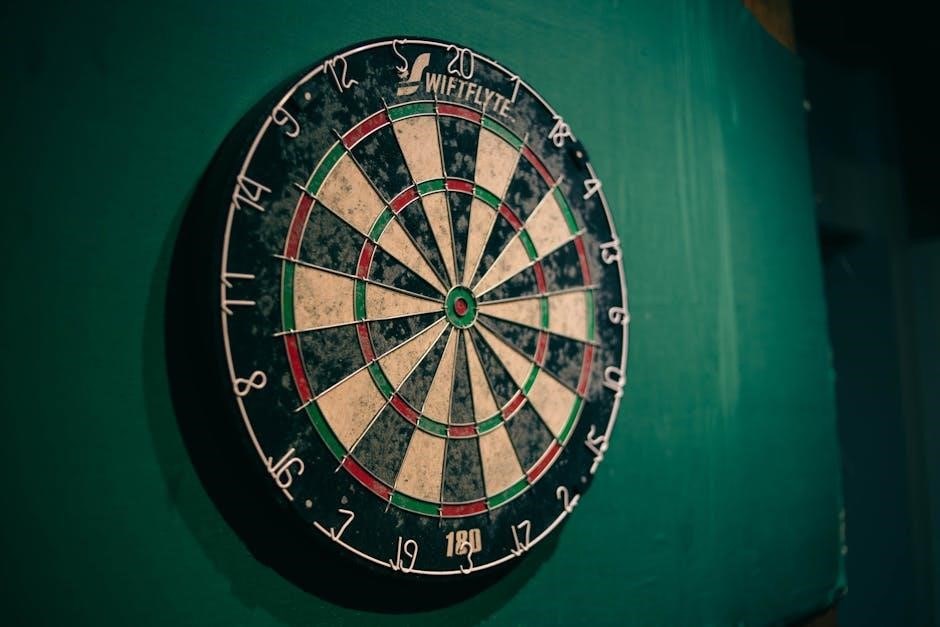the entertainer score pdf
Scott Joplin’s “The Entertainer” is a iconic ragtime piece, widely available as a PDF score for piano and other instruments, offering both free and paid versions for musicians.
Overview of the Piece
Scott Joplin’s “The Entertainer” is a timeless ragtime two-step composition, originally published in 1902. Its lively rhythm and intricate melodies define the ragtime genre. The piece features a structured format with intro, main themes, transitions, and a climactic resolution. Available as a PDF score, it is accessible for piano solo, duet, and other instruments. Musicians can download it for free from platforms like MuseScore or 8notes, with paid options offering higher quality. The score is popular among pianists of all levels, from beginners to advanced players, making it a staple in ragtime repertoire. Its enduring appeal lies in its catchy syncopation and cultural significance.
Historical Context
Scott Joplin’s “The Entertainer,” published in 1902, is a cornerstone of the ragtime era, reflecting the cultural and musical evolution of early 20th-century America. Ragtime, characterized by its syncopated rhythms and African-American musical influences, gained widespread popularity through Joplin’s compositions. “The Entertainer” embodies this style, blending complexity with accessibility. Initially met with moderate success, the piece gained iconic status in the 1970s after its inclusion in the film “The Sting.” Today, it remains a symbol of ragtime’s golden age, influencing generations of musicians and composers. Its historical significance lies in its role as a bridge between African-American musical traditions and mainstream culture.
Popularity and Relevance
Scott Joplin’s “The Entertainer” remains a beloved and iconic piece, experiencing renewed popularity after its 1970s resurgence in “The Sting.” Its ragtime rhythms and catchy melodies continue to captivate audiences. The score is widely available in PDF format, catering to pianists of all levels, from solo arrangements to duets and transcriptions for other instruments. Free and paid versions ensure accessibility, making it a staple in musical education and performance. Its enduring relevance lies in its versatility, adapting to modern interpretations while preserving its historical charm, ensuring its place in both classical and popular culture.

Scott Joplin and His Contribution to Ragtime
Scott Joplin, the “King of Ragtime,” revolutionized music with compositions like “The Entertainer” and “Maple Leaf Rag,” elevating ragtime from a regional style to a national phenomenon.
Biography of Scott Joplin
Scott Joplin (1868–1917) was an African-American composer and pianist, often called the “King of Ragtime.” Born in Texas, he grew up in a musical family and began playing piano at an early age. Joplin’s career flourished in the late 19th and early 20th centuries, with his ragtime compositions gaining national popularity. Despite facing racial barriers and financial struggles, he became one of the most influential figures in American music. His works, such as “Maple Leaf Rag” and “The Entertainer,” remain iconic, blending African-American musical traditions with classical forms. Joplin’s legacy endures, inspiring generations of musicians and revitalizing interest in ragtime.
Significance in Ragtime Music
Scott Joplin’s “The Entertainer” is a cornerstone of ragtime, showcasing his mastery of the genre. His compositions elevated ragtime from a regional style to a national phenomenon, blending African-American musical traditions with classical structures. Joplin’s use of syncopation, harmonic complexity, and rhythmic innovation set a new standard for ragtime music. His works, such as “Maple Leaf Rag” and “The Entertainer,” became iconic, influencing countless musicians and shaping the evolution of American music. Joplin’s legacy as the “King of Ragtime” remains unparalleled, ensuring his music’s enduring relevance and appeal across generations.
Other Notable Works by Scott Joplin
Scott Joplin’s contributions to music extend far beyond “The Entertainer.” His most famous work, “Maple Leaf Rag,” published in 1899, is often considered the piece that brought ragtime into the mainstream. Other notable compositions include “The Sting,” “Solace,” and “Elite Syncopations,” which showcase his mastery of the genre. Joplin also wrote operas, such as “Treemonisha,” and other ragtime pieces like “Magnetic Rag.” His works have been featured in films and continue to inspire musicians, solidifying his legacy as a pioneer of American music. Joplin’s compositions remain timeless, reflecting his innovative spirit and artistic genius.
Structure of “The Entertainer” Score
The score features a clear introduction, main themes, and transitions, showcasing Joplin’s mastery of ragtime. Its syncopated rhythms and modulations create a lively, complex musical experience.
The score begins with a distinctive introduction that sets the tone for the piece, featuring a slow, melancholic melody. This transitions into the main themes, which are characterized by syncopated rhythms and a lively, energetic feel. The introduction establishes the harmonic framework, while the main themes showcase Joplin’s mastery of ragtime. The music is marked by a mix of legato and staccato playing, with dynamic contrasts that add depth. The themes are structured in a classic ragtime format, with repeating motifs and a strong emphasis on rhythm. This section lays the foundation for the rest of the piece, highlighting its complexity and charm.
Transitions and Modulations
The score features seamless transitions between sections, with chromatic passages connecting themes. Modulations are used to create contrast, shifting between keys like F major and C major. These transitions maintain the ragtime feel while adding harmonic richness. Joplin employs abrupt key changes to surprise the listener, yet the music remains cohesive. The modulations are strategically placed to build tension, resolved by returning to the main theme. Dynamic shifts and tempo adjustments further enhance the piece’s complexity, making it a masterclass in ragtime composition. These elements showcase Joplin’s skill in balancing structure with creativity.
Climax and Resolution
The climax of “The Entertainer” is marked by a dramatic buildup of tension, achieved through rapid arpeggios and dynamic shifts. The score reaches its peak with a series of chromatic runs and syncopated rhythms, showcasing Joplin’s mastery of ragtime. The resolution follows with a return to the main theme, providing a sense of closure. The final chords are played in a slower tempo, emphasizing the piece’s grandeur. This structure highlights Joplin’s ability to balance complexity with accessibility, making the climax and resolution both thrilling and satisfying for performers and listeners alike.

Downloading “The Entertainer” Score PDF

The Entertainer score PDF is widely available for free or purchase, offering various arrangements for piano, duets, and other instruments. Websites like MuseScore and 8notes provide easy access to high-quality scores, ensuring musicians can download and play Joplin’s iconic piece with ease.

Free Sources for the Score
Free PDF scores of “The Entertainer” are readily available online, offering convenient access for musicians. Platforms like MuseScore, 8notes, and Mutopia Project provide high-quality, downloadable versions. These sources often include arrangements for piano solo, duets, and even other instruments, ensuring versatility. Many websites allow users to preview the score and listen to audio samples before downloading. Additionally, some platforms offer transposable versions, catering to different skill levels and preferences. Free scores are ideal for educational purposes or casual practice, making Joplin’s masterpiece accessible to everyone. This accessibility has contributed to the piece’s enduring popularity among pianists and music enthusiasts worldwide.
Paid Sources for High-Quality Scores
Paid sources offer high-quality PDF scores of “The Entertainer” with enhanced features. Platforms like Musicnotes, Sheet Music Plus, and others provide professionally engraved scores, ensuring clarity and accuracy. These versions often include detailed dynamics, articulations, and performance notes, making them ideal for serious musicians. Some paid scores also offer exclusive arrangements, such as piano duets or instrumental transcriptions, catering to diverse musical needs. Additionally, paid sources frequently include MIDI files or audio samples, aiding in practice and interpretation. While free versions are available, paid scores deliver superior quality and reliability for those seeking a polished performance experience.
Arrangements and Versions of “The Entertainer”
“The Entertainer” is available in various arrangements, including piano solo, duet, and versions for accordion, brass quintet, and other instruments, catering to diverse musical preferences and skill levels.
Piano Solo Arrangements
Scott Joplin’s “The Entertainer” is widely available as a piano solo arrangement, with versions ranging from easy to advanced levels. Many arrangements maintain the original ragtime flavor while adapting to modern playing styles. Some versions include finger numbers and letters to assist learners, making the piece accessible to pianists of all skill levels. Arrangers like David Bruce and Christoph Dalitz have created popular interpretations, often available as free or paid PDF downloads. These scores can be found on platforms like MuseScore, 8notes, and PianoDoor, offering both traditional and simplified formats. The sheet music often includes tempo and dynamic markings, ensuring authenticity to Joplin’s original composition.
Piano Duet Arrangements
Scott Joplin’s “The Entertainer” is also available in piano duet arrangements, offering a collaborative playing experience. These scores are ideal for two pianists, maintaining the original ragtime spirit while adding harmonic depth. Platforms like MuseScore and 8notes provide free and paid PDF downloads of duet versions, arranged by musicians such as rui.c.sousa.3. These arrangements often include interactive features, allowing for easy practice and performance. Duet versions are popular among educators and students, fostering teamwork and musical expression. They remain faithful to Joplin’s composition while adapting to modern duet playing styles, ensuring accessibility and enjoyment for pianists of various skill levels.
Arrangements for Other Instruments
Beyond piano, “The Entertainer” is arranged for various instruments, including brass quintets, accordion, and guitar. These adaptations maintain Joplin’s ragtime essence while exploring new timbres. For brass quintets, arrangements like Ray Woodfield’s version feature intricate harmonies. Accordion solos, such as those on MuseScore, offer a folk-inspired twist. Guitar arrangements, including Chet Atkins’ version, provide a unique fingerstyle interpretation. These scores are widely available as PDF downloads, ensuring accessibility for musicians across genres. Such diversity highlights the timeless appeal of Joplin’s composition, allowing it to resonate with audiences through multiple instrumental voices while staying true to its ragtime roots.
Historical Significance of “The Entertainer”
Scott Joplin’s “The Entertainer” embodies the spirit of ragtime, influencing musical genres and remaining a cultural icon, with its score widely studied and performed globally.
Impact on Ragtime Music
Scott Joplin’s “The Entertainer” is a cornerstone of ragtime, showcasing the genre’s rhythmic complexity and syncopation. Its publication in 1902 helped define ragtime’s structure and style, influencing countless composers. The piece’s enduring popularity, especially after its 1970s revival, solidified ragtime’s place in musical history. Its intricate melodies and harmonic innovations set a benchmark, inspiring future generations to explore ragtime. As a result, “The Entertainer” remains a pivotal work, not only in Joplin’s oeuvre but also in the broader cultural landscape, ensuring ragtime’s continued relevance and appreciation.

Cultural Influence and Legacy
Scott Joplin’s “The Entertainer” has left an indelible mark on culture, becoming synonymous with ragtime’s golden age. Its revival in the 1970s, notably through its use in “The Sting,” reintroduced the piece to a new generation, cementing its legacy. The score’s widespread availability in PDF and MIDI formats has made it accessible to musicians worldwide, fostering its enduring popularity. Its influence extends beyond music, appearing in films, commercials, and modern performances, ensuring its relevance in contemporary culture. “The Entertainer” continues to inspire artists and audiences, solidifying its place as a cultural icon and a timeless representation of ragtime’s artistry.

Practicing “The Entertainer”
Mastering “The Entertainer” requires precise tempo control, dynamic expression, and intricate finger dexterity. Utilize sheet music and tutorials to refine techniques and achieve a polished performance.
Tempo and Dynamics
Accurate tempo and dynamics are crucial for “The Entertainer.” The score specifies a moderate tempo, marked as “Not fast,” with a suggested tempo of 100. Dynamics range from soft (p) to loud (f), creating contrast and energy. Adhering to these markings ensures the ragtime rhythm and syncopation shine, maintaining the piece’s lively character. Proper balance between tempo and dynamics enhances the musicality, making the performance engaging and true to Joplin’s intent. Musicians should practice these elements carefully to achieve a polished and expressive rendition of this classic ragtime work.
Finger Exercises and Techniques
Mastery of “The Entertainer” requires precise finger exercises and techniques. The score’s complex ragtime rhythms demand strong dexterity, particularly in arpeggios and syncopated patterns. Musicians should focus on finger independence, ensuring smooth transitions between notes. Practice with finger numbers and slow tempos can enhance accuracy. The piece’s chord progressions and melodic lines benefit from legato playing, while staccato sections add rhythmic clarity. Regular exercises like Hanon or Czerny can improve technical proficiency. Additionally, exploring piano duet arrangements can refine coordination and timing, making the performance more dynamic and engaging for both players and listeners alike.
Resources for Effective Practice
Effective practice of “The Entertainer” is supported by various resources. Sheet music websites like 8notes.com and MuseScore.com offer free and paid PDF scores, including arrangements for piano solo, duet, and other instruments. Platforms like PiaDOOR provide easy-to-read sheet music with finger numbers, aiding beginners. Additionally, tools like tempo adjusters and MIDI files help musicians master complex rhythms. For advanced players, sites such as MutopiaProject.org offer high-quality, public-domain scores. Exploring these resources ensures a comprehensive and enjoyable learning experience, catering to all skill levels and preferences.

Cultural Impact of “The Entertainer”
“The Entertainer” is a cultural icon, symbolizing ragtime’s golden era. Its use in films like The Sting boosted popularity, making it a recognizable tune globally. Modern performances and educational resources ensure its legacy endures, inspiring new generations of musicians and audiences alike.
Use in Film and Media
Scott Joplin’s “The Entertainer” gained widespread fame after its iconic use in the 1973 film The Sting, where it underscored the movie’s themes of nostalgia and wit. This exposure revitalized interest in ragtime music and introduced Joplin’s work to a new generation. The score’s catchy melody and rhythmic complexity made it a perfect fit for the film’s narrative, leading to a surge in its popularity. Today, “The Entertainer” remains a cultural phenomenon, frequently featured in TV shows, commercials, and live performances, solidifying its place as a timeless classic in both music and media history.
Modern-Day Performances
Scott Joplin’s “The Entertainer” remains a beloved piece in modern performances, with pianists and musicians worldwide interpreting it in various styles. Its rhythmic charm and melodic richness make it a staple in both classical and contemporary settings. From solo piano recitals to ensemble arrangements, the piece continues to captivate audiences. Additionally, its availability as a PDF score has democratized access, allowing amateur and professional musicians alike to perform it. The composition’s timeless appeal ensures its continued relevance, with modern artists often incorporating it into their repertoires, further cementing its legacy in today’s musical landscape.
Scott Joplin’s Legacy
Scott Joplin, the “King of Ragtime,” left an indelible mark on music history. His compositions, like “The Entertainer,” remain timeless, inspiring generations and revitalizing ragtime’s popularity through accessible PDF scores.
Influence on Future Composers

Scott Joplin’s innovative ragtime style, as seen in “The Entertainer,” has profoundly influenced future composers. His syncopated rhythms and harmonic complexity inspired later musicians to explore similar techniques. Modern arrangers, like David Bruce, have adapted his works for various instruments, ensuring his legacy endures. The availability of “The Entertainer” score PDFs has made his music accessible to a broad audience, fostering education and inspiration. Joplin’s contributions remain a cornerstone of musical development, bridging ragtime’s past with contemporary interpretations and continuing to shape the creative direction of composers worldwide.
Revival of Interest in Ragtime

The widespread availability of “The Entertainer” score PDFs has played a significant role in reviving interest in ragtime music. Free and paid versions of the score, arranged for various instruments, have made Joplin’s work accessible to a global audience. Modern adaptations, such as piano duets and arrangements for brass quintets, have introduced ragtime to new generations. This resurgence has sparked fresh appreciation for the genre, ensuring its cultural relevance in contemporary music. The ease of downloading and sharing these scores has further fueled the revival, keeping ragtime alive and vibrant in today’s musical landscape.